Fonts
A font is a set of printable or displayable text characters in a specific style and size.
The type design for a set of fonts is the typeface and variations of this design form the typeface family. For example, Helvetica is a typeface family, Helvetica italic is a typeface, and Helvetica italic 10-point is a font. In practice, the terms font and typeface are often used interchangeably
A typeface is a design for a set of characters. Popular typefaces include Times Roman, Helvetica, and Courier. The typeface represents one aspect of a font. Other aspects include such characteristics as size, weight, italics, bold, and other attributes.
Some default fonts include: Arial, Arial Black, Arial Narrow, Courier New, Impact, Tahoma, Times New Roman, and Verdana.
In this section, GlobalVision describes best practices with respect to the above issues, providing tips and possible solutions and tools.
Using licensed fonts
Risk
If you do not use licensed fonts, characters may become corrupted and computers may not be able to read the text.
Issues
- Fonts downloaded for free may not provide a license that allows font
embedding.
- Fonts become outlined images when not licensed.
Example
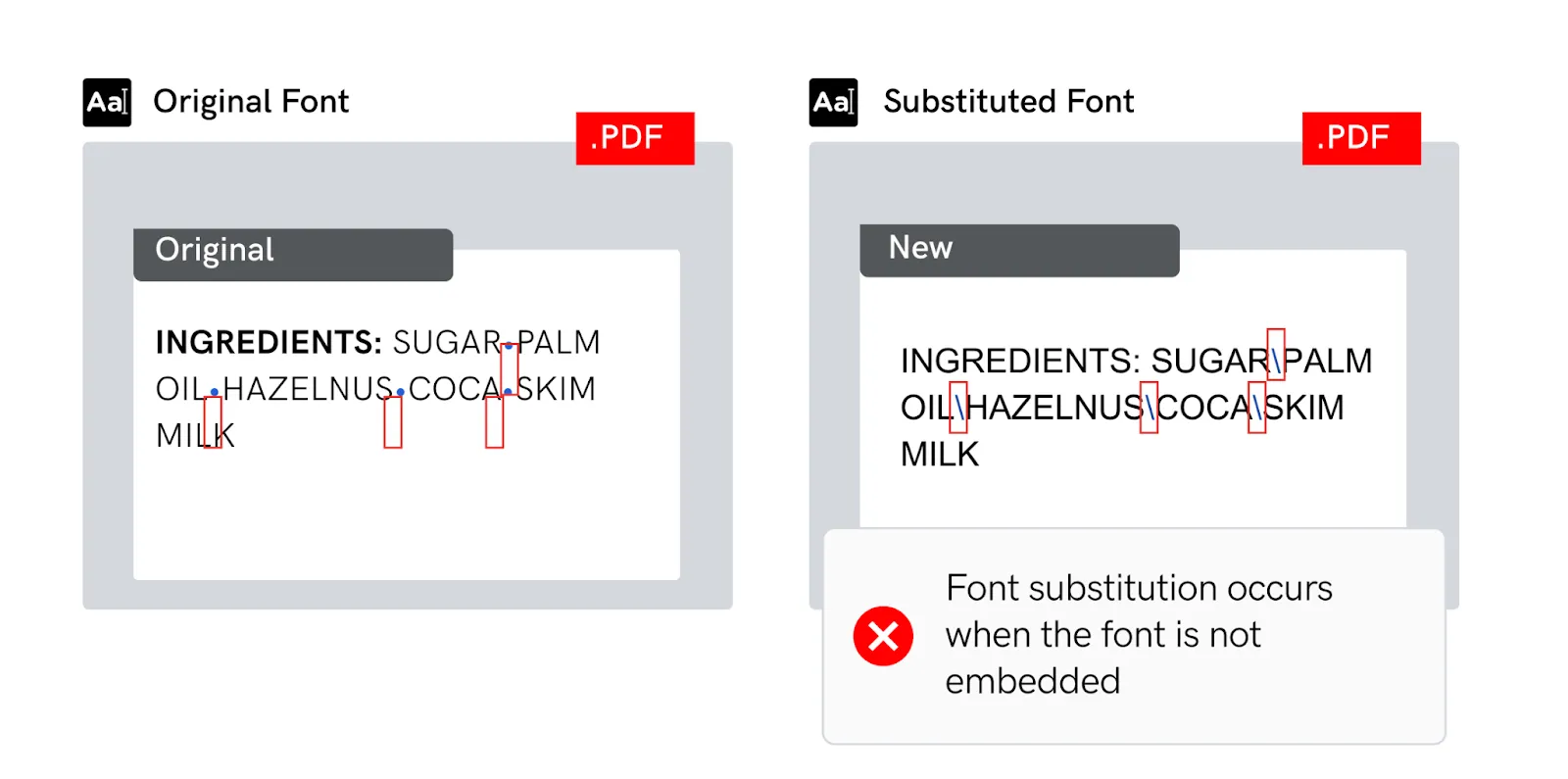
Solution
Do:
- Purchase fonts from reputable vendors.
- Ensure your font is licensed and validate your agreement with a font-manager program.
- Review license agreements and keep records of licenses.
Don’t:
- Use fonts beyond the scope allowed by the license.
- Use unauthorized copies of fonts.
- Use fonts without a valid license.
Tips
The following steps detail how to verify font information and integrity.
Apple Font Book:
- Go to Preview and select Show Font Info.
- Verify the font information (i.e. PostScript name, Kind, Language, Copyright, Embeddable, etc.).
Extensis Suitcase Fusion:
- Select the font in the Finder.
- Go to File and select Get Info.
- Verify the font integrity.
Embedding fonts in PDF files
Risk
If fonts are not embedded they may be substituted or become an image and layout changes may occur (i.e. text may become hidden and the layout may become corrupt).
Issue
Thousands of fonts exist in the marketplace but only a limited number are installed on every computer. If a computer does not have a font installed and if the font is not embedded in the artwork files, the font will be substituted out.
Example

Solution
Do:
- Embed all fonts when creating artwork.
- Ensure that you have the appropriate licensing to embed fonts.
Don’t:
- Outline or rasterize fonts.
- Use unlicensed fonts.
Tips
The following steps detail how to determine if fonts are embedded using Adobe
Acrobat Pro:
- Press CTRL+D to view the document’s properties.
- Select the Font tab.
- Verify the font information and properties (i.e. type, encoding, embedding, etc.).
Installing fonts used in artwork files
Risk
If fonts are not properly installed they may be substituted or become an image and layout changes may occur (i.e. text may become hidden and the layout may become corrupt).
Issue
Computer programs automatically replace non-installed document fonts with default system fonts. As a result, text may become hidden, overlaid on top of other objects/text and the entire layout could become corrupt.
Example
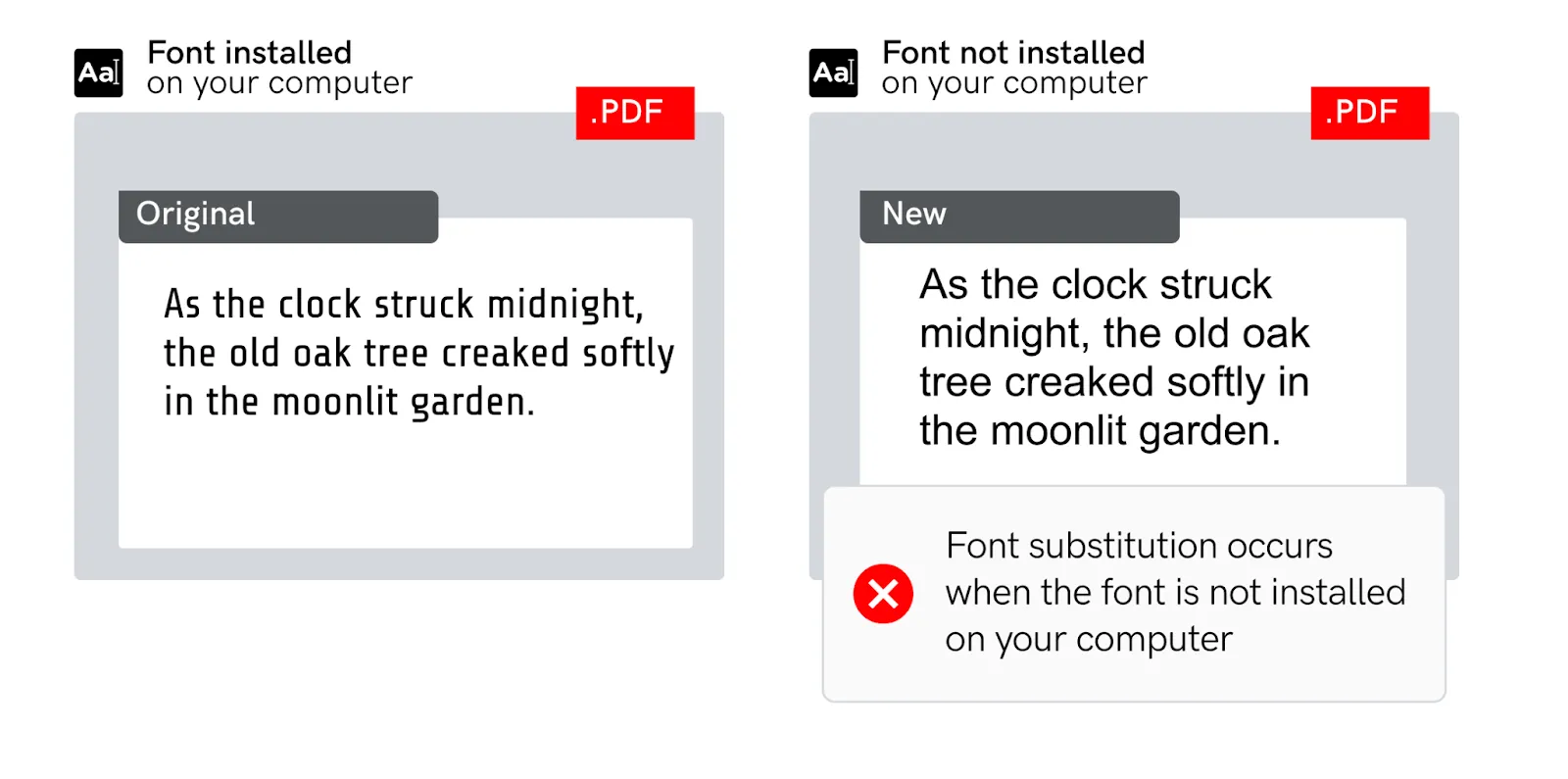
Solution
Do:
- Install fonts used in an artwork file on your computer.
- Share the font files along with the artwork files. This ensures that others can easily install and use specific fonts used in the design.
- When creating PDFs, embed the fonts to ensure that they are included in the document.
- Package all artwork elements with all fonts used in the artwork.
Don’t:
- Create PDFs without verifying all fonts.
- Outline or rasterize fonts.
- Use unlicensed fonts.
- Open files without installing fonts first.
Tips
The following steps detail how to add all fonts used in an artwork package.
Microsoft Windows:
- Open the font folder that came with the artwork package.
- Press CTRL+A to select all fonts in the font folder.
- Right-click and click Install.
Mac OS:
- Open Apple Font Book.
- Select Add Font.
- Select the font you want to install.
Using OpenType fonts
Risk
If you do not use OpenType fonts, characters may become corrupted when text is transferred to a PDF file and layout changes may occur.
Issues
- Font formats other than OpenType are based on older technology and standards.
- Fonts may be substituted (with the closest default font) when opening a file in
Microsoft Windows created in Mac OS.
Example
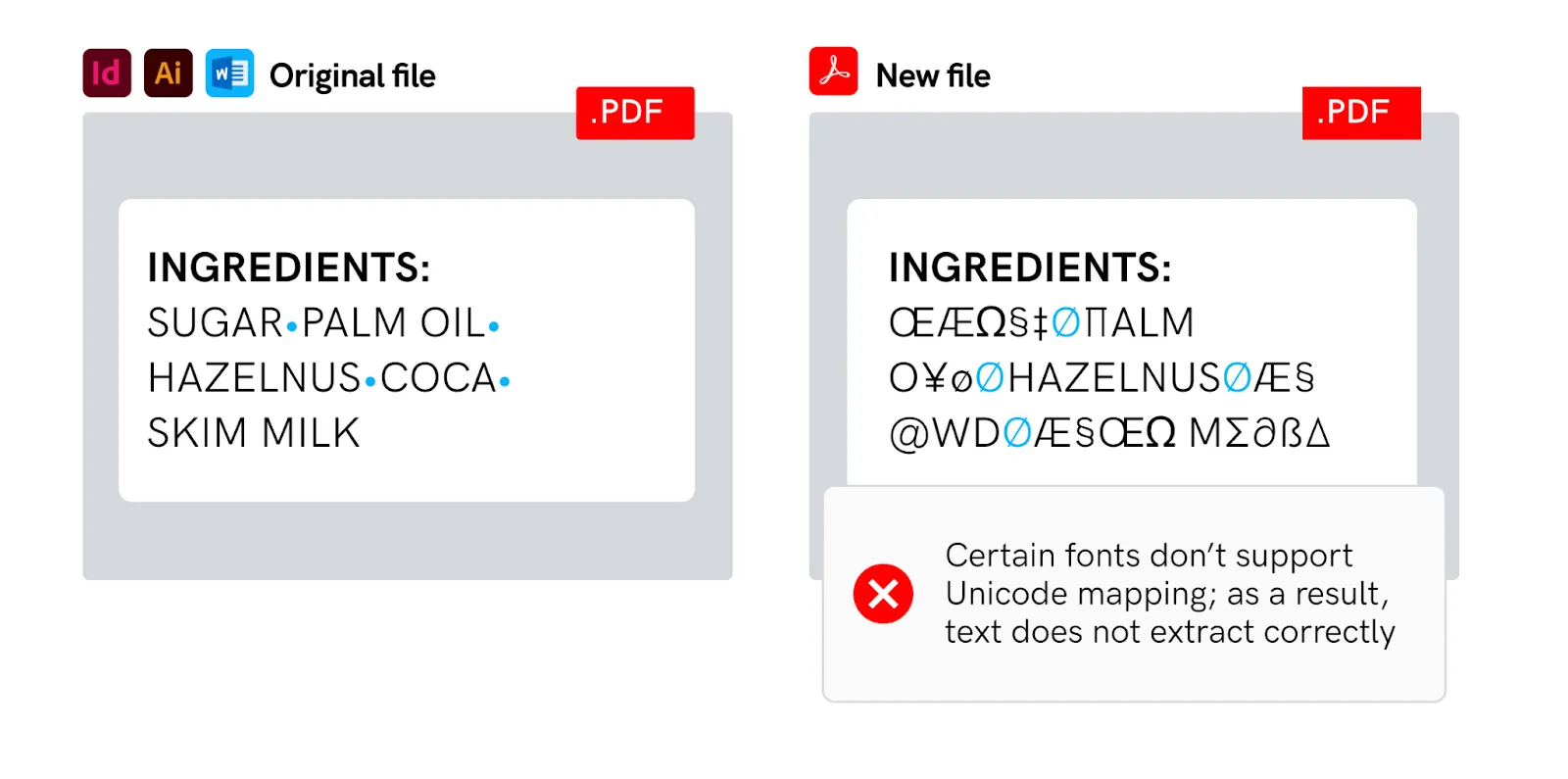
Solution
Do:
- Use OpenType fonts to support advanced options like ligatures, alternate characters, and various glyph variations.
- Use fonts that are Unicode-based.
- Standardize on fonts throughout the supply chain.
- Use cross-platform fonts that do not require conversion.
Don’t:
- Use bitmap (screen) fonts.
Tips
The following steps detail how to view font properties.
Apple Font Book:
- Open Font Book.
- Select the font from the Font window.
- Go to File, select Preview, and then select Show Preview.
- Check the properties.
Extensis Suitcase Fusion:
- Open Suitcase Fusion.
- Go to File and select Get Info. The full name is listed in the File Information window.
Standardizing fonts
Risk
If you do not standardize your fonts it can result in low-quality copy and artwork, whose appearance can change based on the country/region.
Issues
- Different regions and vendors use different font sets.
- Fonts may not be fully licensed, cross-platform, or contain all scripts.
- Fonts can change from one version to another, affecting quality.
Example
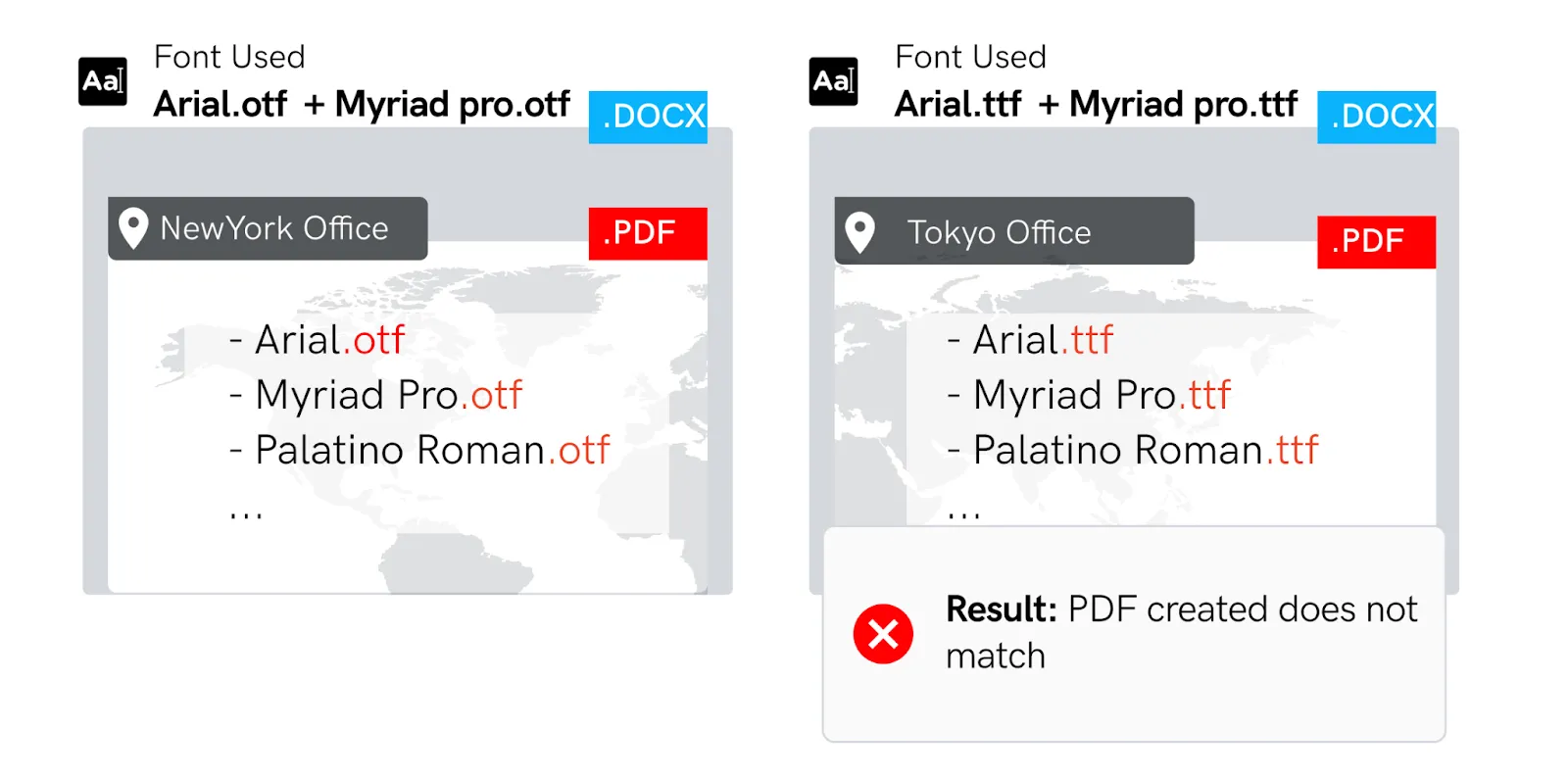
Solution
Do:
- Publish a list of approved fonts for use by graphic designers and print suppliers.
- Standardize on font names, versions, and types throughout the supply chain.
- Standardize on font vendors/suppliers throughout the supply chain.
- Purchase fonts for your suppliers/external designers.
Don’t:
- Use non-approved fonts.
- Use different font versions and types.
- Download free fonts from the internet.
Tips
Refer to corporate graphic guidelines.
Using OpenType Pro or COM based fonts on the script used in the document
Risk
If you do not use OpenType Pro or COM based fonts, encoding errors in the PDF may occur.
Issues
- Some glyphs are not extracted properly when using Adobe Illustrator.
- The extraction process can lead to missing punctuation.
Example
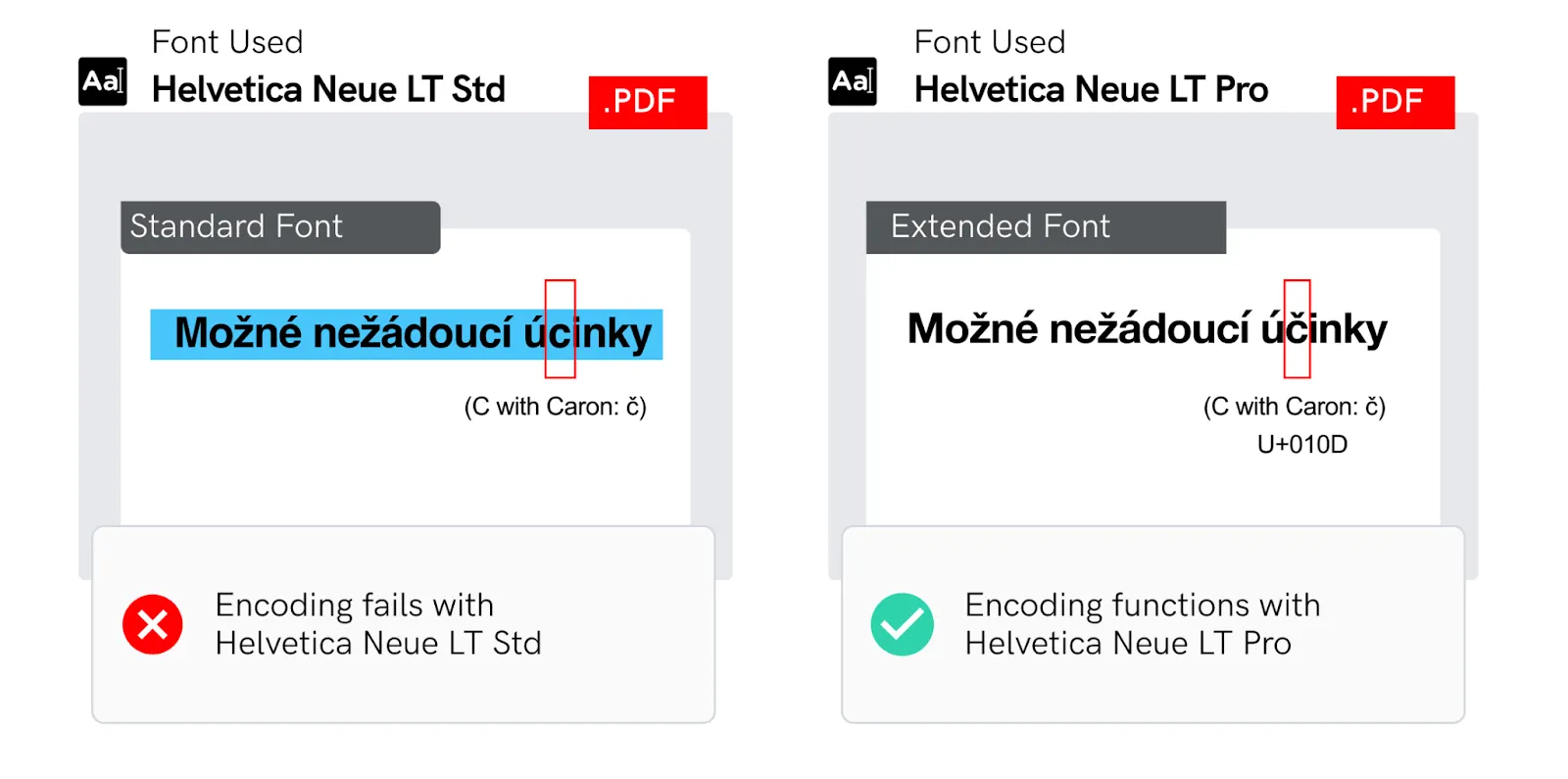
Solution
Do:
- Use an extended OpenType or OpenType Pro font for extended features.
- Use the font that supports the script corresponding to the language being
used.
Don’t:
- Use an OpenType standard font when planning to use multiple languages in
the same document.
Tips
See Appendix 05 for the differences between OpenType font varieties.
Limiting the usage of Variable Fonts
Risk
If you use variable fonts, the text provided in PDFs may not be fully compatible which compromises print consistency.
Issues
- Variable font usage compromises readability or creates an accessibility issue.
- Variable fonts don't render weight in PDF export.
- Fonts not being read at PDF output.
- Variable Fonts may not display properly.
Example
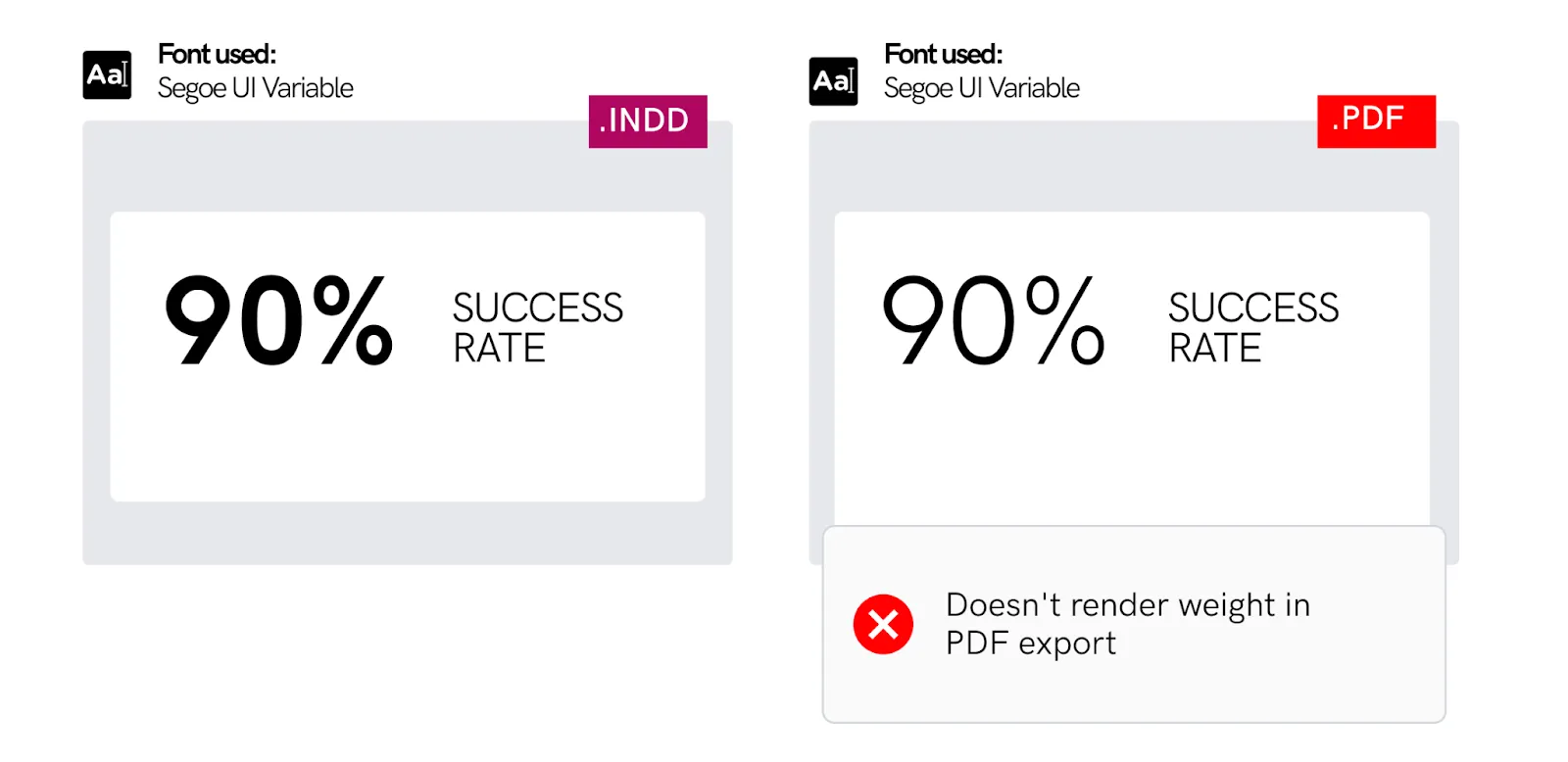
Solution
Do:
- Use a static or Opentype font to generate the PDF.
- Use a newer version of PDF Producer (Adobe Distiller in this case).
- Create a standard PDF (PDF/X), a print-ready PDF.
Don’t:
- Rely on variable font features that may not be widely supported in all PDFs.
- Use variable fonts for production workflows and generating PDFs.
Tips
Don't skip thorough testing and proofing.
Verify that your variable font choices work well in print and meet the desired design outcomes.
Using Helvetica fonts with caution
Risk
If you use Helvetica fonts, understand that some text styles within the Helvetica family compromise accessibility.
Issues
- (Heavy Condensed Oblique, Heavy Condensed) do not reflect the style (Bold Italic).
- Helvetica does not contain the glyphs needed to render all possible scripts you listed.
Example
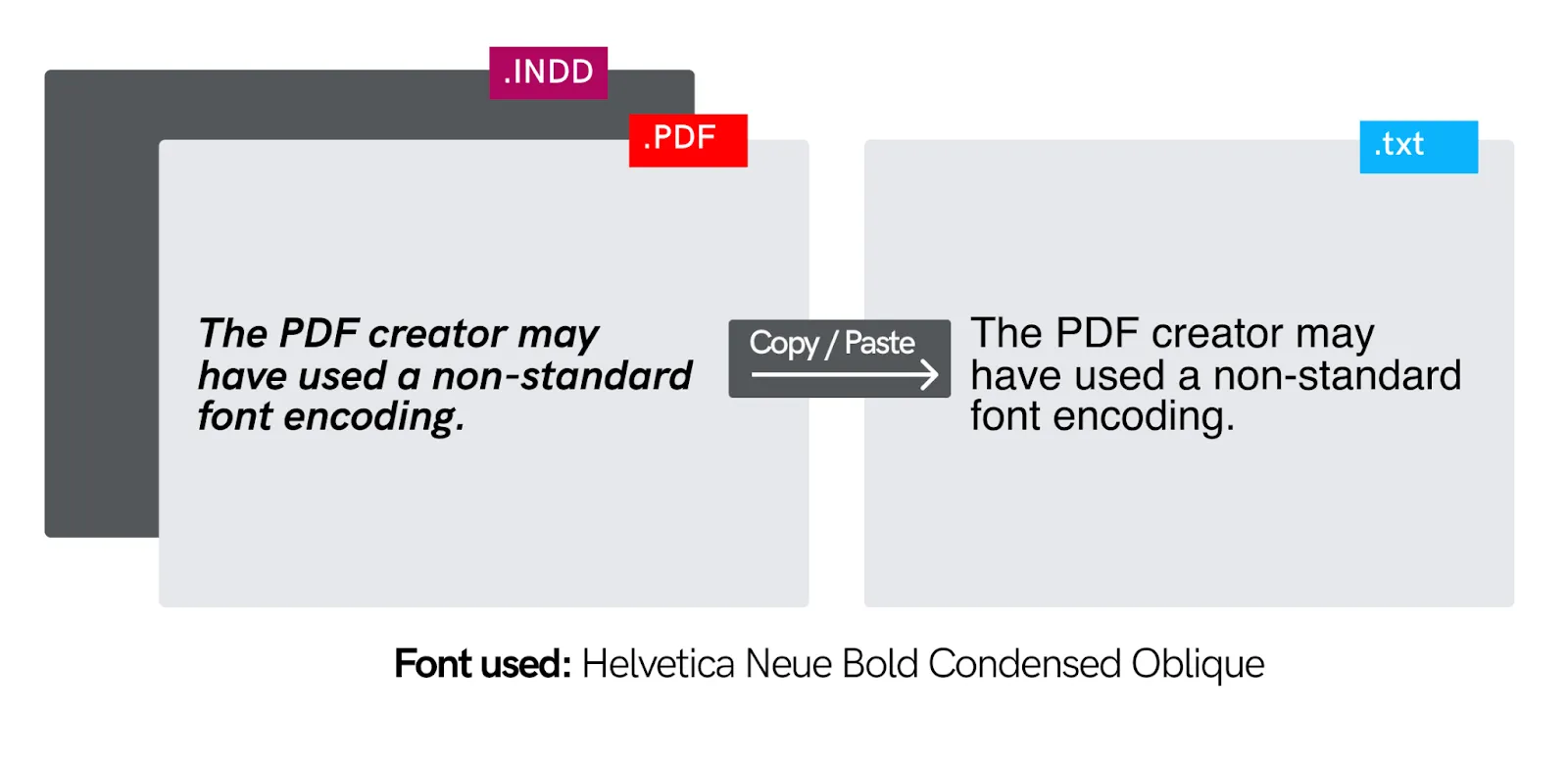
Solution
Do:
- Use Bold Italic to represent the Bold italic style.
- Use Bold to represent the Bold style.
Don’t:
- Use Heavy Condensed Oblique to represent Bold Italic.
- Use Heavy Condensed to represent Bold.
Tips
Consider Alternative Fonts:
Caution: Explore alternative fonts that offer a similar clean and modern aesthetic. There are many sans-serif typefaces available that can provide a fresh look while avoiding the overuse of Helvetica.
Choosing the right fonts for multilingual documents
Risk
If you do not choose the proper fonts for your multilingual documents, the encoding may be arbitrary.
Issues
- The common issue is accessibility when extracting text from PDF.
- A weird character could appear and compromise the accuracy of the document.
Example
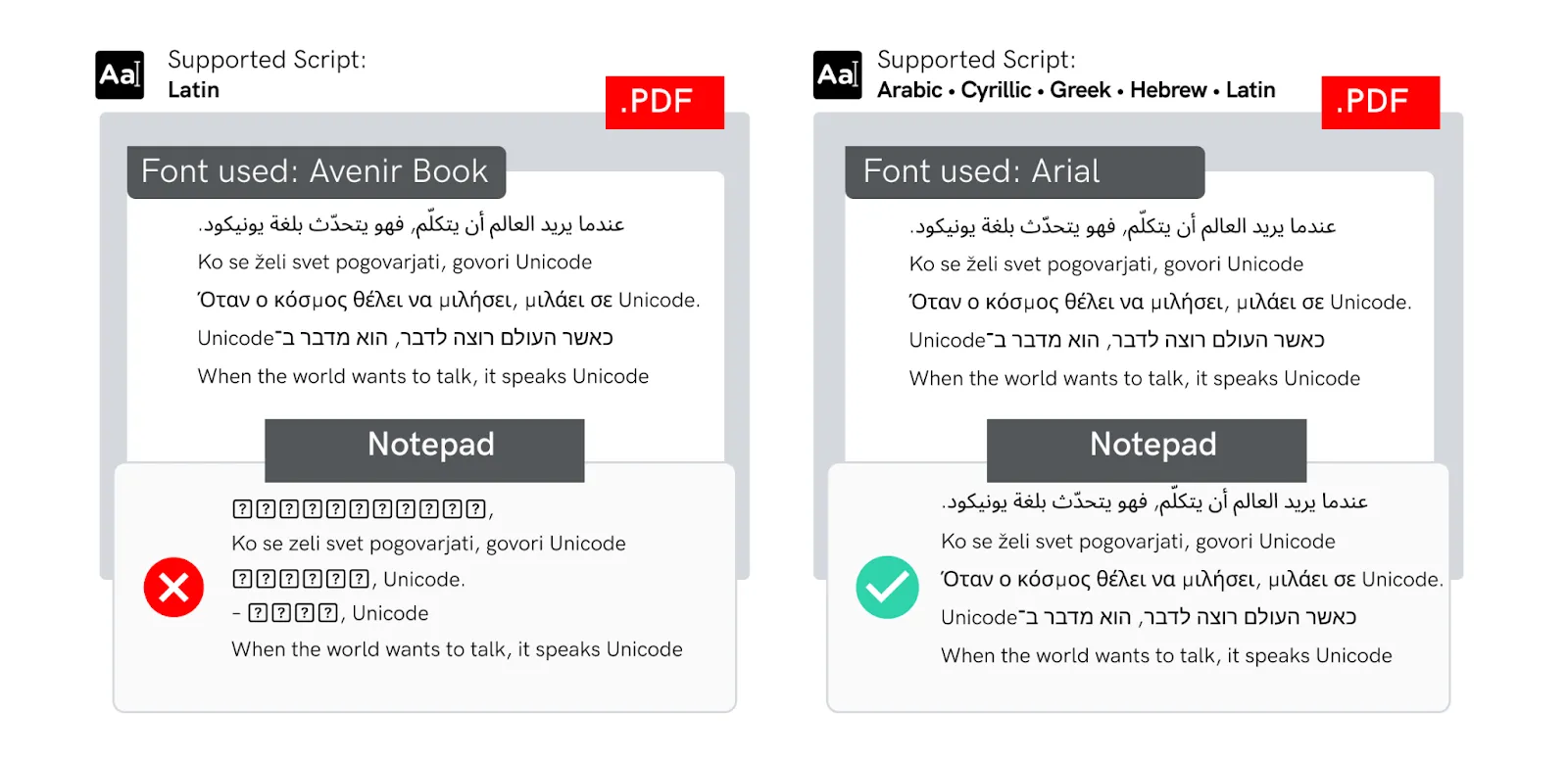
Solution
Do:
- Use simple fonts that can handle all the characters of the multilingual documents.
- Select Unicode compatible fonts.
- Verify that your selected fonts support the specific languages and scripts used in your document.
- Choose a font that supports the script of the targeted language/s.
- Ensure that your chosen fonts render consistently across various browsers and platforms.
- Use the latest, most updated versions of PDF.
Don’t:
- Use a font that does not support the script of the targeted language.
- Choose fonts without testing.
- Use fonts with limited character sets.
Tips
- Make sure that the necessary fonts are installed on your system.
- Use a different font (preferably OpenType) in the original document and then re-create the PDF.
- Re-create the PDF file with a newer version of Acrobat Distiller.
- Use the latest Adobe Postscript driver to create the PostScript file and then re-create the PDF.


